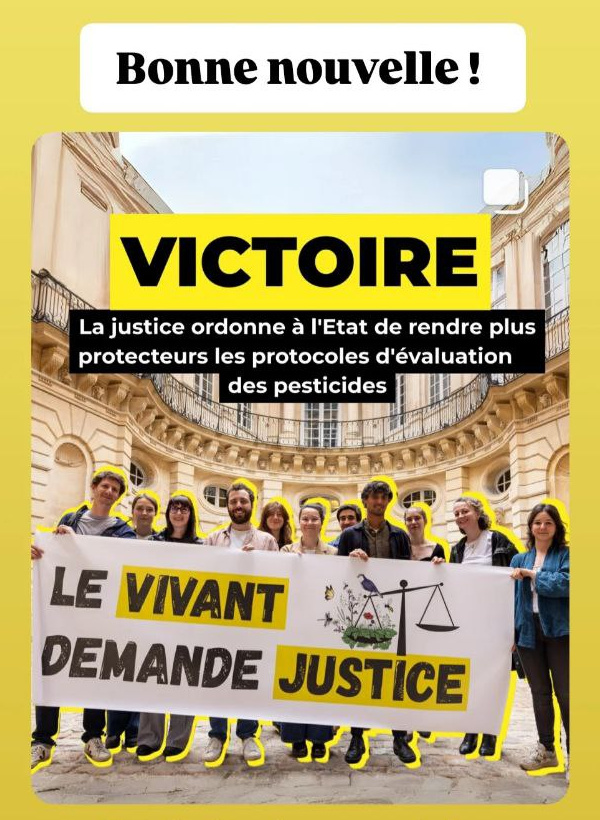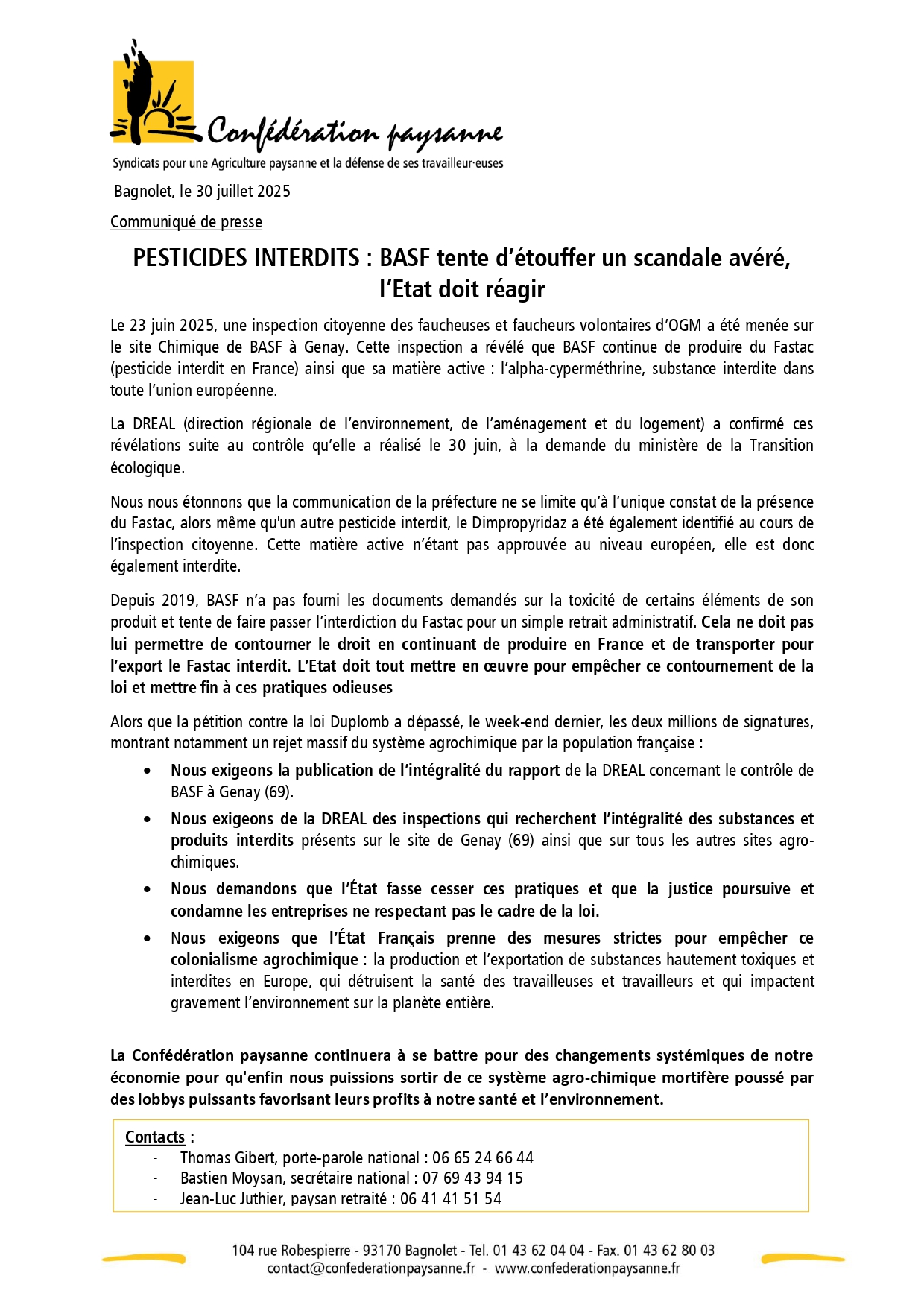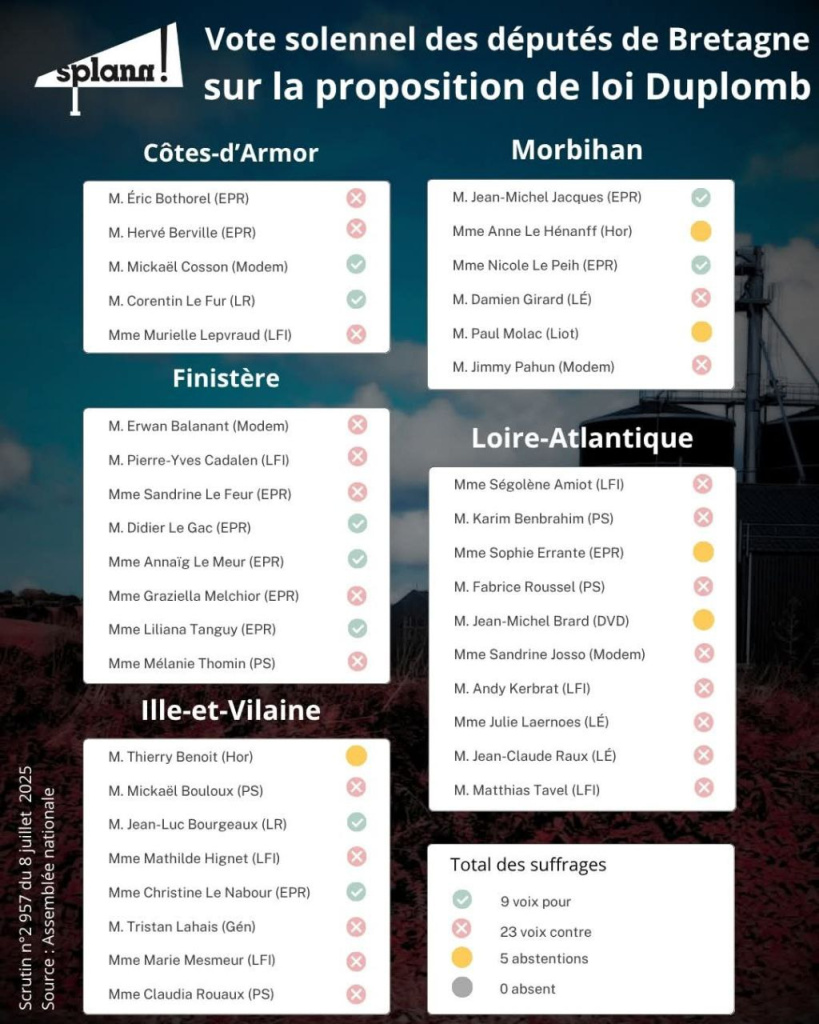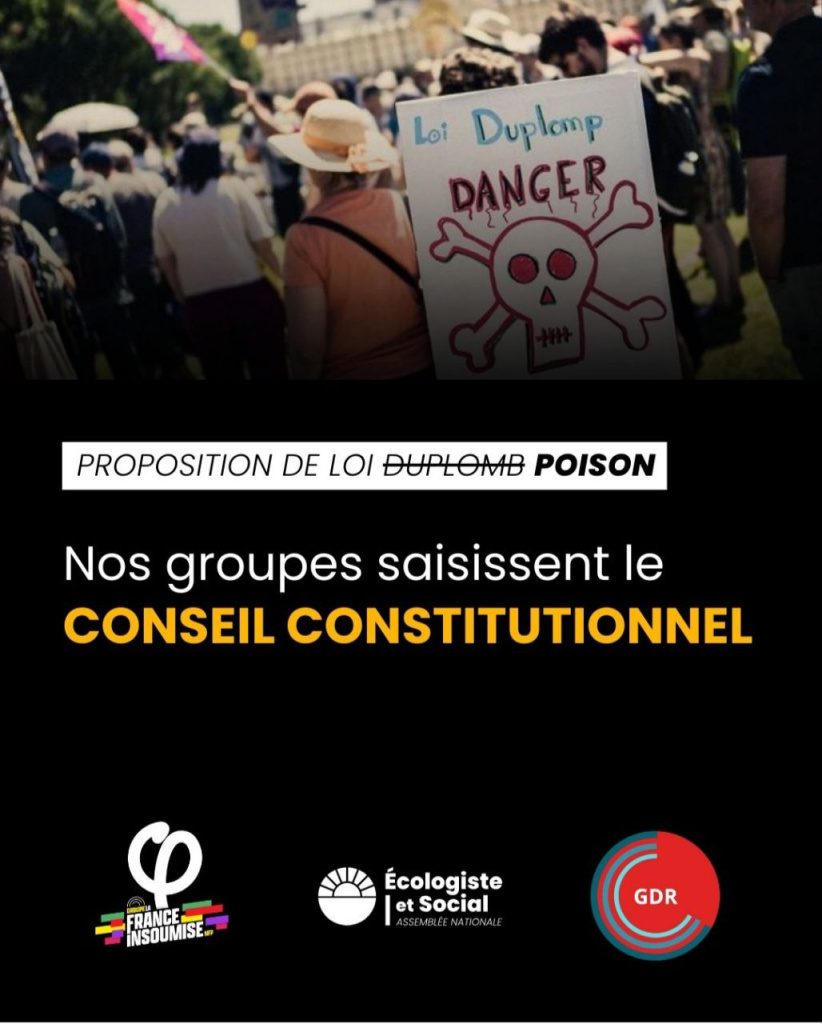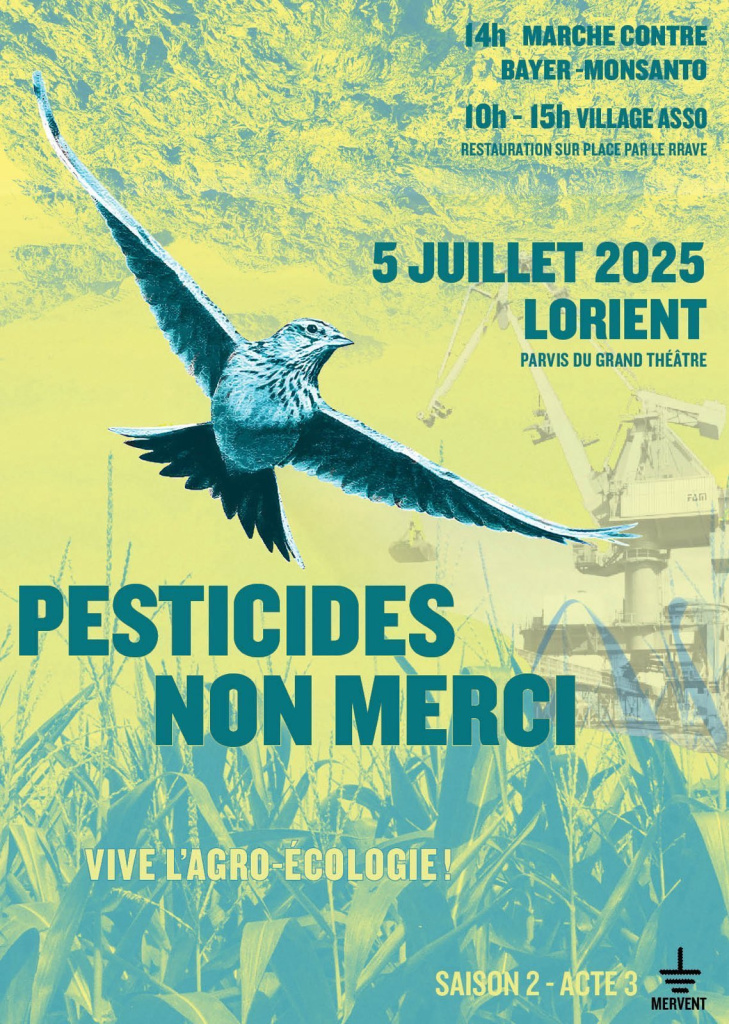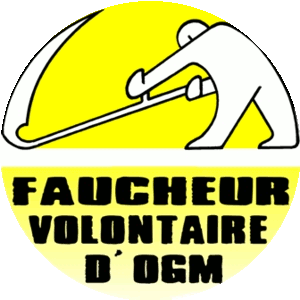Paquet Omnibus VII de la Commission Européenne : scientifiques et professionnels de santé interpellent le premier ministre
Comme lors de l’examen du projet de Loi Duplomb, des scientifiques, des soignants et des soignantes s’alarment dans une lettre ouverte au premier ministre. Sous couvert de simplification de la réglementation européenne concernant les pesticides, nous assistons à une vague de déréglementation et de mise à l’écart des données scientifiques censées fonder les autorisations de mises sur le marché des pesticides (AMM).Nous le redisons avec force : les données scientifiques, médicales et économiques convergent pour justifier au contraire un renforcement du rôle des agences sanitaires, un renforcement des protections contre les effets toxiques avérés des pesticides et, plus largement, un soutien aux alternatives aux pesticides. Malgré une sous-évaluation notoire des effet cocktails ou des effets sub-létaux sur les pollinisateurs, les données s’accumulent pour documenter les effets dramatiques des pesticides sur la biodiversité, l’équilibre des milieux, et sur la santé humaine (cancers, maladies neurodégénératives, atteinte du système reproducteur, contamination intra-utérine…).
Elles nous obligent à tous les efforts pour permettre aux agriculteurs de changer de modèle.Si le projet de la DG Santé de la Commission Européenne était adopté, à savoir la suppression des renouvellements d’autorisations, donc des réévaluations, pour la grande majorité des pesticides, c’est exactement la direction inverse qui serait prise. Cela diminuerait de fait la capacité des agences à encadrer la mise sur le marché des pesticides et à surveiller leurs effets environnementaux et sanitaires. Nous assisterions à un retour plus de 30 années en arrière !Les 2300 scientifiques, soignants et soignantes signataires de cette lettre demandent que le gouvernement français, les parlementaires nationaux et européens mettent tout en œuvre pour s’opposer à cette proposition. Ils doivent aussi renforcer le rôle et l’indépendance de notre agence sanitaire, l’Anses, fragilisée depuis l’adoption de la Loi Duplomb.Etant donnée l’urgence de la situation (le projet de la Commission devant être entériné mi-décembre) nous demandons un RV avec le premier ministre.
Contacts presse :
Laurence HUC, Directrice de recherche INRAE : 06 76 91 59 41
Sylvie NONY, Historienne des sciences, Secrets Toxiques : 06 51 55 96 07
Pierre – Michel PERINAUD, Président d’Alerte médicale sur les pesticides (AMLP) : 06 31 23 66 72 Marc-André SELOSSE, Professeur du Muséum national d’Histoire naturelle : (+33) 607 12 34 18
Djéné DIANE, attachée de presse / chargée de communication institutionnelle : 06 09 17 35 59
https://secretstoxiques.fr/2025/12/09/2300-medecins-et-scientifiques-ont-signe-la-tribune-omnibus/
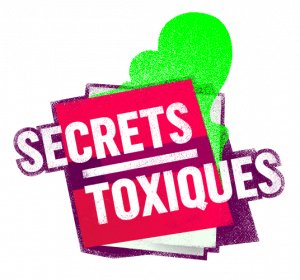
~~~~~~~~~~~~~~~~~~~~~~~~~~~
~~~~~~~~~~~~~~~~~~~~~~~~~~~
OMNIBUS VII en quelques mots :
Un des Prétextes : « améliorer la compétitivité des agriculteurs » et « réduire la charge administrative des Etats «
Un des Moyens : suppression du réexamen systématique de toutes les substances pesticides.
Changements potentiels :
Aujourd’hui, la réglementation prévoit d’accorder des autorisations de mise sur le marché pour une durée limitée en général à dix ou quinze ans et de réévaluer les substances, au bout de cette période d’autorisation, à la lumière des nouvelles connaissances scientifiques disponibles.
Mais
Avec OMNIBUS VII
Les substances identifiées, « candidates à la substitution » en raison de leur toxicité, ne seraient pas visées par cette modification et devraient donc toujours se plier à un réexamen systématique pour rester sur le marché.
Les autres substances – c’est à dire la majeure partie- seraient dispensées de réévaluation !!!
Et si elles n’avaient pas été ré évaluées, des molécules toxiques comme des organophosphorés, associés au troubles du neuro-
développement, par exemple, ou le chlordécone seraient toujours utilisées et continueraient à empoisonner tout le vivant…



